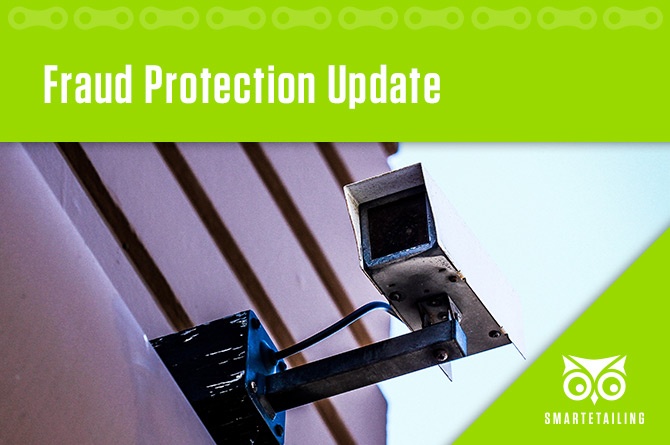
Online fraud affected 2.32% of U.S. orders in 2017. Some experts contend that online fraud has leveled off, but with the way SmartEtailing, and other e-commerce providers, continually talk about this challenge, it would be understandable if a retailer decided not to have an active shopping cart on their website. However, this is terribly short-sighted, and here is why.
As a brick-and-mortar retailer, especially one that has been in business for a few years, you are already accustomed to dealing with theft of one kind or another. Whether it is shoplifting, employees helping themselves to merchandise, or unauthorized “bro” discounts at the register, your bottom line is being affected by the same nefarious motivations driving online fraud. Your response to those in-store shrinkage problems, though, is not to lock the doors, turn off the register and cease selling items to legitimate customers. You build a percentage into your bottom line to account for shrinkage, you strive to hire honest employees, you educate them on watching for grifters, and you may even have in-store loss prevention specialists monitoring for shoplifters. These measures are integral to doing business.
Recognizing that retailers are already taking steps to manage the risk of theft in their businesses, and considering that in modern retail, the distinction between in-store and online shopping has significantly narrowed, why would a retailer want to take away a legitimate customer’s ability to purchase an item online? The justification for keeping the shopping cart off to prevent fraud is akin to not riding one’s bicycle in order to avoid getting doored. Yes, there are risks involved, but they can be managed down to acceptable levels by incorporating steps into the course of one’s normal business practices.
If you are considering turning on the shopping cart, or if it is already active, you should develop a procedure for processing orders that scrutinizes them for signs of fraud. It is recommended that every order is checked prior to fulfillment and once an effective procedure is implemented, it takes less than a minute for each one. SmartEtailing published "Tips for Online Fraud Mangement," on our blog last year. It addresses many of the elements to look for when reviewing orders. Comprehensive information about fraud risk is presented in our Resource Center including details about using an Authorize.net payment gateway and PayPal.
Recently some newer trends and developments
in fraudulent orders have emerged including:
- Encrypted email addresses - Providers such as protonmail.com, posteo.com & maildrop.com - These email accounts are completely confidential. Even the provider doesn’t know who it is nor can they read the messages. Messages are encrypted and protected so they are completely anonymous
- Pick-up in-store fulfillment - Yes, some thieves are brazen enough to place an online order and then waltz right in and pick it up. Fortunately, many of the same tell-tales are present in these orders as those slated for shipment including big-ticket items, unusual/encrypted email addresses & bogus phone numbers
- Car racks gaining popularity - Thule Helium & Yakima Ridgeback racks seem to be showing up more frequently on suspicious orders
SmartEtailing is committed to helping retailers keep their sites healthy. We are actively developing tools with which to more readily detect fraudulent orders and activity. We look forward to sharing more about those as they become ready for deployment. Until then, we remind you that our Client Support Team is available to help. If you are unsure about an order, we will be glad to review it with you. If you are getting ready to activate your shopping cart, we can help you prepare. If your cart is already active but you need to set up a payment gateway, Authorize.net fraud filters or PayPal, we can assist you.
Online fraud is not going to go away, but working together, it can be managed so its impact on bicycle retail is minimal.
If you want to know more or need help with your website, please contact SmartEtailing Support.
Sources: http://www.mytotalretail.com/article/following-money-online-fraud-attacks-2017/You May Also Like
These Related Stories

October 2020 News & Notes

How Does Your Website Score?

.png?width=1676&height=300&name=WS_Logo_full_blue%20(1).png)
No Comments Yet
Let us know what you think